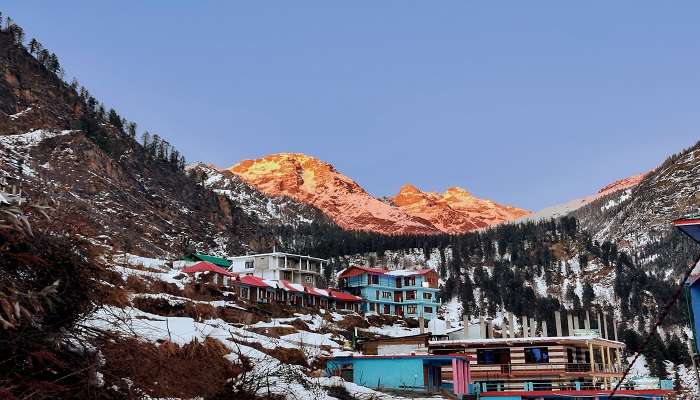Himachal’s Nargu Wildlife Sanctuary Is An Ideal Attraction For Nature Lovers
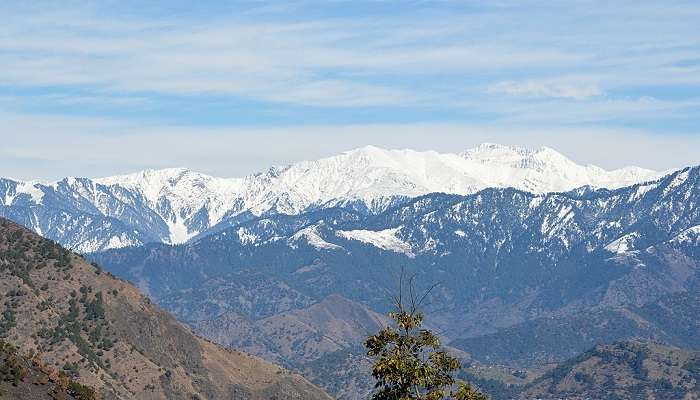
One of the most popular tourist attractions in Himachal Pradesh is Nargu Wildlife Sanctuary, which is located in the Mandi district across the river Uhl. This sanctuary is home to many flora and fauna. The sanctuary was developed in 1962 with an area of almost 132.37 km2. There are different variations of species and animals present in the sanctuary and the sanctuary leads to many trekking destinations making it a beautiful travel destination. This wildlife sanctuary is one of India’s most beautiful sanctuaries for nature lovers and adventurers to lose themselves in and find some much-needed peace.
Geography And Nature In The Nargu Wildlife Sanctuary
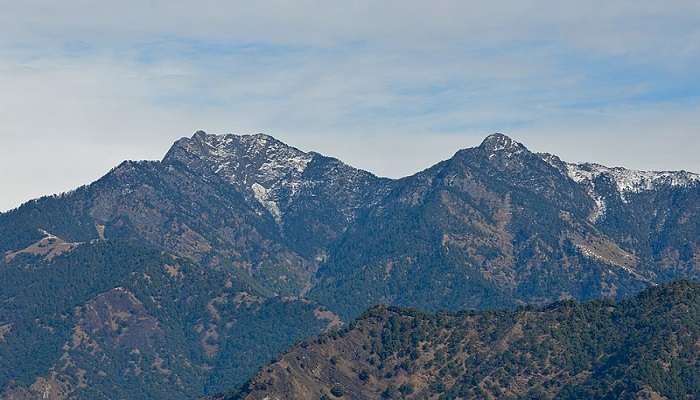
The Nargu Wildlife Sanctuary is known for its rich flora and fauna. According to the survey conducted from 2019 – 2020, 45 plant species belong to 28 different families. The slopes of the sanctuary are mostly covered with Alpine trees and pine trees. Along with trees, there are also different varieties of climbers, ferns, herbs and shrubs. It is also observed that different parts of the plants in the sanctuary are used for medicinal purposes by the locals to date to cure many diseases and illnesses.
Various species of birds and animals like brown bears, Himalayan black bears, flying squirrels, leopards, barking deer and many more. This is great sightseeing for tourists with a perfect blend of mountains and animals. The sanctuary joins with the Khokan Sanctuary giving access to many trekking adventures and gorgeous views of nature.
Must Read: Barot Valley
Things To Remember Before Visiting The Nargu Wildlife Sanctuary
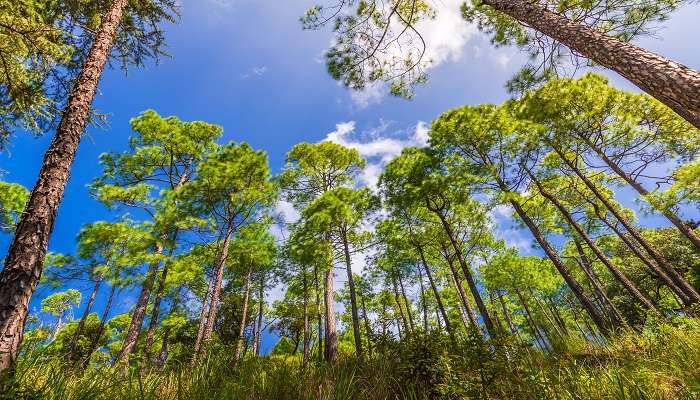
The sanctuary connects with the village Barog which is connected to Kullu through trekking routes. The best time to visit this sanctuary is between April-May and August-October because, during these times, the weather is perfect for exploring the wilderness and experiencing the wonders of nature.
The route to Kullu through Barot passing through the sanctuary has various adventures to experience like trekking, paragliding, fishing and camping. There are a few rest houses on the trek route with stunning views of the mountains and lush greens all around. Few of these activities require prior booking. Trekking is one of the most preferred activities by tourists as it gives a lifetime experience with breathtaking views and exploring the wilderness of the rich flora and fauna.
Nearby Places to Visit
From Parashar Lake to the Himachal Darshan Photo Gallery. Check out these amazing places near Nargu Wildlife Sanctuary you must visit.
1. Parashar Lake
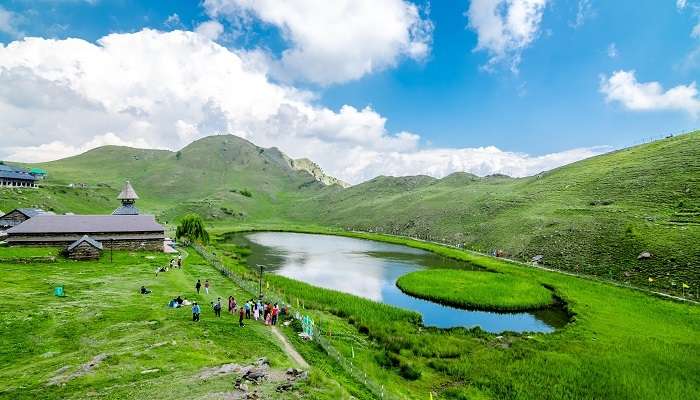
Parashar Lake also known as Prashar Lake is located in the East town of Mandi, Himachal Pradesh. With a floating island and fresh water, there is a temple with a pagoda-style structure named after the sage Parashara built by Raja Ban Sen. According to mythological stories, the lake was built by Bhima after the Kurukshetra war of Mahabharata. Till today, nobody has been able to depict the depth of the lake which is a unique aspect.
There are two ways to reach this lake. One is by taking the route of trekking from the Baggi village which takes approximately 5-6 hours to reach the lake. The roadways are open only during the months of June – August because of heavy rains and snowfall causing blockage of the road. Due to heavy snowfall and low temperatures trekking is also closed sometimes in the month of December.
Suggested Read: Trekking Near Manali
2. Shikari Devi Temple
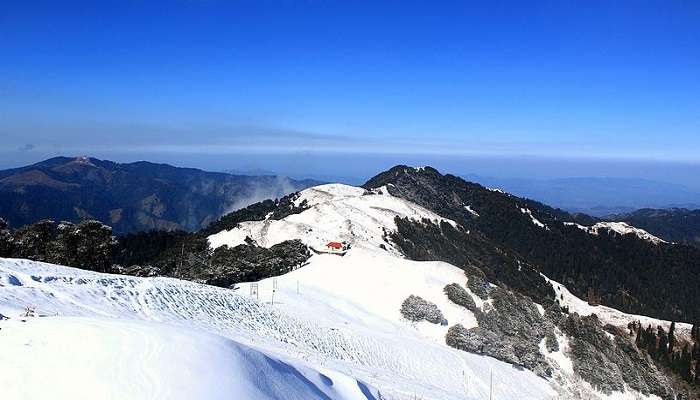
Shikari Devi Temple on the highest peak of Mandi district is known as the Crown of Mandi. The temple is situated in the middle of the mountain making it a striking view for sunrise and sunset and experiencing the wonders of nature. An interesting point is that no matter how heavy the snow is, the roofless temple does not have snow inside on the goddess idol, which is quite surprising. The entire mountain is covered with snow during the snowfall, making it an eye-catching experience.
There are two ways now to reach the temple. One way is to take the road by vehicle and drive to the steps of the temple. The devotees should then climb 500 steps to reach the temple. The other way is to trek through the dense forest. It is advised not to trek when it is snowing. Other than that, trekking may take up to 5-6 hours, going through the deep forest, making it an unforgettable experience between the mountains, trees, and wildlife, and you may come across very few shepherd houses.
3. Rewalsar

Rewalsar Lake also known as Tso Pema is a small town in Rewalasar surrounded by mountains in the district Mandi, Himachal Pradesh. It is a natural lake with a floating island. This place is surrounded by various monasteries, temples and Gurudwara. Locals call this place Tri Sanga. The place interestingly follows three religions that are Hinduism, Tibetian Buddhism and Sikhism each having its different stories.
According to Hinduism, this place belongs to the Pandavas connecting with seven lakes. This place is also mentioned in the Skanda Purana when a sage Lomas meditated in the mountains of Rewalsar, Lord Shiva and Goddess Parvati blessed the sage and told him that all the angels of heaven would bless as flowers and trees there.
Suggested Read: Delhi To Spiti Valley Road Trip
4. Panchavaktra Temple
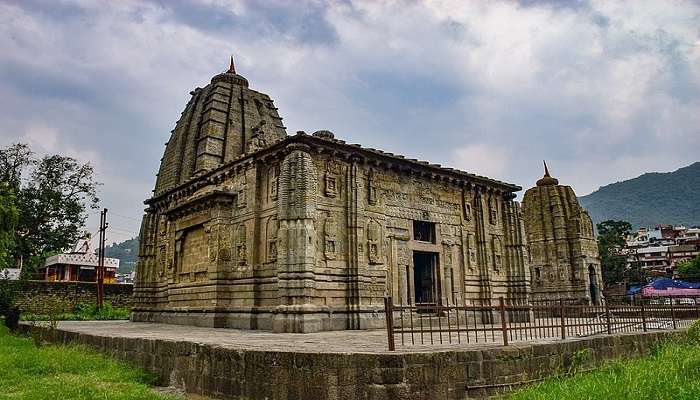
Panchvaktra Temple dedicated to Lord Shiva is one of the most famous temples of Himachal Pradesh located in Mandi district which is nearly 600 years old. The temple is situated between the junction of river Suketi and Beas and is built with the architectural style of shikhara. The temple holds an important cultural heritage as it is one of the most ancient temples.
The idol of Lord Shiva in the temple has five-faced characters that describe nature. Aghora, Ishana, Vaamdeva, Rudra and Tat Purusha. The five faces of the idol can be seen only through the front view.
5. Himachal Darshan Photo Gallery

Himachal Darshan Photo Gallery is a photo gallery museum with various photograph collections of the beauty of the nature of Himachal Pradesh like mountains, valleys, birds, animals, historical events, sculptures and many other cultural and historically significant aspects.
This place is a simple yet memorable destination for tourists who want to know more about the place and its history where they can take a look around. The museum is on the national highway from Mandi.
The museum is open from 9 am – 7 pm
Further Read: Trekking Near Dharamshala
Now that you have a guide to the destination Nargu Wildlife Sanctuary, make sure to plan accordingly and have an amazing trip to Himachal Pradesh for an adventurous and breathtaking experience.
For our editorial codes of conduct and copyright disclaimer, please click here.
Cover Image Credit: Timothy A. Gonsalves for Wikipedia Commons
Frequently Asked Questions About Nargu Wildlife Sanctuary
How much time does it take to trek to the Nagru Wildlife Sanctuary?
In most cases, it can take anywhere from 5 to 6 hours to trek to the Nagru Wildlife Sanctuary. However, depending on various factors, the duration of your trek may differ.
Are there any places to rest around the sanctuary?
Yes, there are resting homes between the trekking route and also near the sanctuary.
How is the climate?
The climate is humid except during extreme winters when there is a chance of heavy snowfall.
Are there any tourist attractions near the sanctuary?
There are many lakes and temples on the mountain.
Which month is best to visit Himachal Pradesh?
February to June are generally considered to be the best for visiting Himachal Pradesh. The weather during this time is pleasant and ideal for tourists wanting to enjoy some snowfall.
People Also Read:
Sakteng Wildlife Sanctuary Khaling Wildlife Sanctuary Dalma Wildlife Sanctuary

With a passion for exploring and travelling to the roads long forgotten, experience the world through enthralling stories and adventures. Join me as I share my experiences at some of the world’s most popular tourist destinations and quench that pestering curiosity with something exciting!



